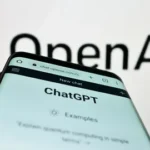In the world of AI-driven content creation, ChatGPT has emerged as a powerful tool that can generate human-like responses. However, achieving those authentic-sounding replies requires more than just typing a question. The key to unlocking ChatGPT’s true potential lies in crafting the right prompts. In this blog, we’ll explore how to master the art of human-like writing with ChatGPT prompts and elevate your AI interactions to the next level.
What Makes ChatGPT Responses Sound Human?
To make ChatGPT’s responses sound human-like, it’s essential to understand the technology behind its natural language generation. ChatGPT uses vast datasets and sophisticated algorithms to predict and generate text. However, without the right prompts, the responses may come off as robotic or generic.
When writing prompts for ChatGPT, it’s crucial to keep in mind the tone, context, and intent. A good prompt guides the AI to generate more engaging, personalized, and natural-sounding answers. Whether you’re asking a simple question or generating content, the clarity of your prompt can significantly impact the authenticity of the response.
Key Techniques for Writing Prompts That Generate Human-Like Responses
To get ChatGPT to write like a human, focus on using conversational prompts. This means asking questions or giving instructions that feel like a natural conversation. Here are a few techniques:
1. Crafting Conversational ChatGPT Writing Prompts
- Start by framing your prompt as a dialogue. For example, instead of just asking, “What is the capital of France?” try saying, “Hey, could you tell me the capital of France and why it’s so famous?” This subtle shift encourages a more engaging and thoughtful response.
- Be clear about the context and the tone you want. ChatGPT can adjust to a variety of tones, from formal to casual. For example, “Can you explain this concept in a casual tone?” helps the AI deliver a more approachable response
2. Using Context to Make ChatGPT Sound More Like a Real Person
- Providing relevant context can make ChatGPT’s response feel more authentic. For instance, if you’re asking for advice, add details about your situation: “I’m new to gardening, what are the best tips for beginners?” This personal touch helps the AI generate a more tailored and human-like reply.
3. Examples of Natural-Sounding Prompts for Different Scenarios
- If you want a recommendation: “I’m planning a weekend trip to New York, can you suggest some fun activities for a solo traveler?”
- If you want to write a blog post: “I need help drafting a blog on the benefits of meditation. Can you start with a friendly intro that hooks the reader?”
Common Mistakes to Avoid When Writing ChatGPT Prompts
Even though crafting prompts may sound simple, there are a few common mistakes that can hinder your results.
1. Over-Complicating Prompts and Affecting Natural Flow
- Overloading your prompt with too much information can confuse ChatGPT and lead to disjointed or overly complex responses. Try to keep your prompts focused and to the point, especially if you want a natural-sounding reply.
2. How to Avoid Robotic-Sounding Replies with Simple Adjustments
- One of the biggest pitfalls when using AI is receiving responses that sound overly formal or stiff. To combat this, use friendly, everyday language in your prompts. Instead of saying, “Please provide an exhaustive explanation,” opt for, “Can you explain this in a simple way?”
Advanced Tips for Customizing ChatGPT Responses
If you’re looking to take your ChatGPT game to the next level, there are advanced techniques you can use to make the responses even more human-like.
1. Personalization Techniques to Make ChatGPT Sound More Engaging
- Personalizing prompts helps ChatGPT feel more like a conversation with a real person. For example, if you’re asking for content ideas, include a brief description of your target audience: “I’m writing for a health blog aimed at busy moms—can you suggest some engaging post ideas?”
- You can also ask for specific stylistic choices, like humor or empathy: “Can you add a touch of humor to the next paragraph?”
2. How to Fine-Tune Prompts for Specific Writing Styles or Tones
- Adjusting your prompt to fit a specific style or tone can greatly influence how human-like ChatGPT sounds. For example, if you want a more professional tone, simply include that in your prompt: “Can you explain this in a professional yet approachable manner?”
The Future of Human-Like Writing with ChatGPT
As AI technology advances, the ability for ChatGPT to generate even more realistic, human-like responses will only improve. Natural language generation is at the heart of this evolution, and with each new update, ChatGPT gets better at understanding context and tone.
Looking ahead, the gap between AI and human writing continues to shrink, with future advancements pushing ChatGPT closer to producing content that’s indistinguishable from what a human writer would produce.
How ChatGot Makes Human-Like Writing Simple with Easy Prompts
ChatGot is a free, easy-to-use chatbot powered by the ChatGPT API 3.5, designed for users who want simple, human-like responses. Without requiring an account, ChatGot allows you to enter straightforward prompts, making it accessible for everyone. While not overly advanced, the chatbot still delivers effective, natural conversations by responding to clear and concise instructions.
Whether you’re asking for advice, content ideas, or creative solutions, ChatGot allows you to experience the power of AI with minimal effort, making it the perfect tool for crafting simple, human-like responses using easy prompts.
Conclusion
Mastering the art of human-like writing with ChatGPT prompts is essential for unlocking the true potential of AI-driven content. By focusing on crafting conversational, context-rich prompts and avoiding common mistakes, you can guide ChatGPT to produce more authentic, natural responses. Personalization and fine-tuning prompts for specific tones or styles further enhance the experience. With tools like Chat Got, which simplifies this process, anyone can easily create engaging, human-like interactions with AI.
As AI continues to evolve, the gap between machine-generated and human content will continue to shrink, making ChatGPT an indispensable taol for anyone looking to enhance their writing.


